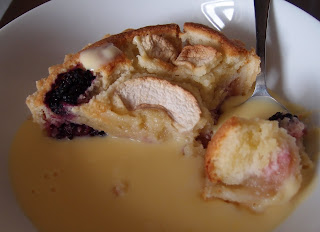
I can take a hint; for as long as I can remember whenever I have mused out loud what to bake Mr CC has helpfully suggested, “macarons”. Much as I love macarons – their crisp, light shells sandwiching rich delights – I have been a little wary of making them. They seem so….high maintenance….so needy.

I’ve read on many a website that macarons hate humidity...so, of course, I end up baking them on one of the most humid weekends of the year. This isn’t as bad a tactic as it sounds – if they succeed I am a baking genius who can defy all the odds; if they fail it’s the stupid weather’s fault!

But, never let it be said I shy away from a challenge. Armed with my new non-stick macaron mats from Squires I got to work.

I’m torn as to my favourite flavour macaron from Laduree; it’s either coconut or chestnut. Sadly, both are seasonal flavours rather than all-year round, so for my first attempt at macarosn I opted for coconut. The fact that they were sandwiched with white rum white chocolate Ganache may have been a factor!

OK, so they’re maybe not as uniform or pretty as the lovelies that you see for sale at Laduree or Pierre Herme, but they’re not bad! And they taste heavenly.

As is often the way with much in life, what you fear and dread most actually turns out fine. I enjoyed making these and, while they’re not a quick bake, I think they’re worth the work. Oh yes, did I mention? In your face, weather!

Ingredients
For the macaron shells:
90g ground almonds
20g desiccated coconut
3 egg whites
55g caster sugar
½ teaspoon coconut extract
200g icing sugar, sifted
For the Ganache filling:
60ml single cream
150g white chocolate, chopped
2 teaspoons coconut liqueur – I used Malibu
Method
Start by placing the ground almonds and desiccated coconut into a food processor and blitz until you have finely ground powder.
Tip into a bowl and put to one side.
Line two baking sheets with baking paper or macaron mats (see above).
Beat the egg whites until you have soft peaks.
Add the caster sugar and coconut extract and beat further until the sugar has dissolved (rub a small amount of the mix between your fingers – if you can feel grains it needs more beating).
Fold in half the icing sugar, ground almonds and coconut.
Fold in the rest of the icing sugar, ground almonds and coconut – it’s easier to do it in two lots.
Spoon the mixture into a piping bag, which has a round nozzle – about 2cm is ideal.
Pipe rounds approx 3cm across leaving a gap between them to allow for spreading. Don’t expect the mixture to be firm like buttercream; it’s firm enough to hold its shape but it will run out of the icing bag without you squeezing so work quickly and precisely.
Lightly tap the baking sheets on the work top to encourage the macarons to spread a little. At this point the macarons are sticky and, if you tap you finger on one, some of the mix will come away.
Leave to stand for 30-40 minutes. This is important as they need to develop a thin skin and their “foot”. If you tap the macaron again, you will feel the shell and nothing will stick to your finger.
Preheat the oven to 150˚C/fan oven 130˚C/300˚F/Gas mark 2.
Bake the macarons for approximately 25 minutes or until they have a firm-ish shell but aren’t brown. I gave them 15 minutes, then turned the trays and gave a further 10 minutes – they must be cooked otherwise they won’t lift cleanly off the baking sheet.
Leave to cool, on their trays, on a wire rack.
When cool, they can be stored in an airtight container. Only fill and sandwich them on the day of serving.
To make the Ganache filling: bring the cream to the boil over a low heat.
Remove the pan from the heat and add the chocolate.
Stir until melted and smooth.
Stir in the liqueur.
Pour into a bowl and refrigerate for approximately 20 minutes, or, until the Ganache is smooth enough to spread. I found that 10 minutes in the freezer got the ganache to a perfect spreadable consistency.
Sandwich the macarons using the Ganache.
Bask in the glory of the wonderful thing you have made.
Eat.

































 When I got my copy of the Autumn 2011 (issue 114) magazine I was stunned - nay flabbergasted - to see that my blog had been given a TWO PAGE SPREAD (no, you naughty people, not the centrefold!)
When I got my copy of the Autumn 2011 (issue 114) magazine I was stunned - nay flabbergasted - to see that my blog had been given a TWO PAGE SPREAD (no, you naughty people, not the centrefold!)














